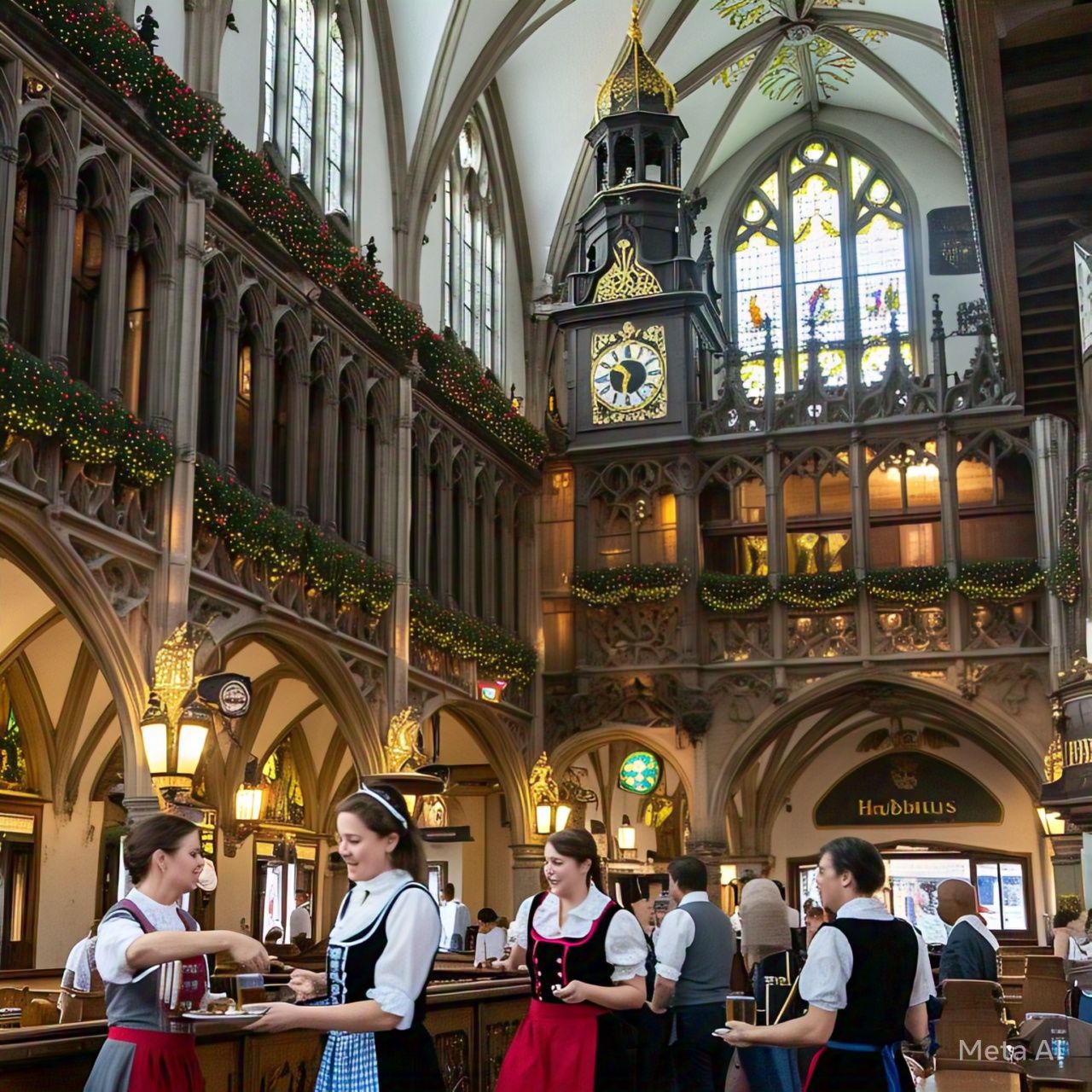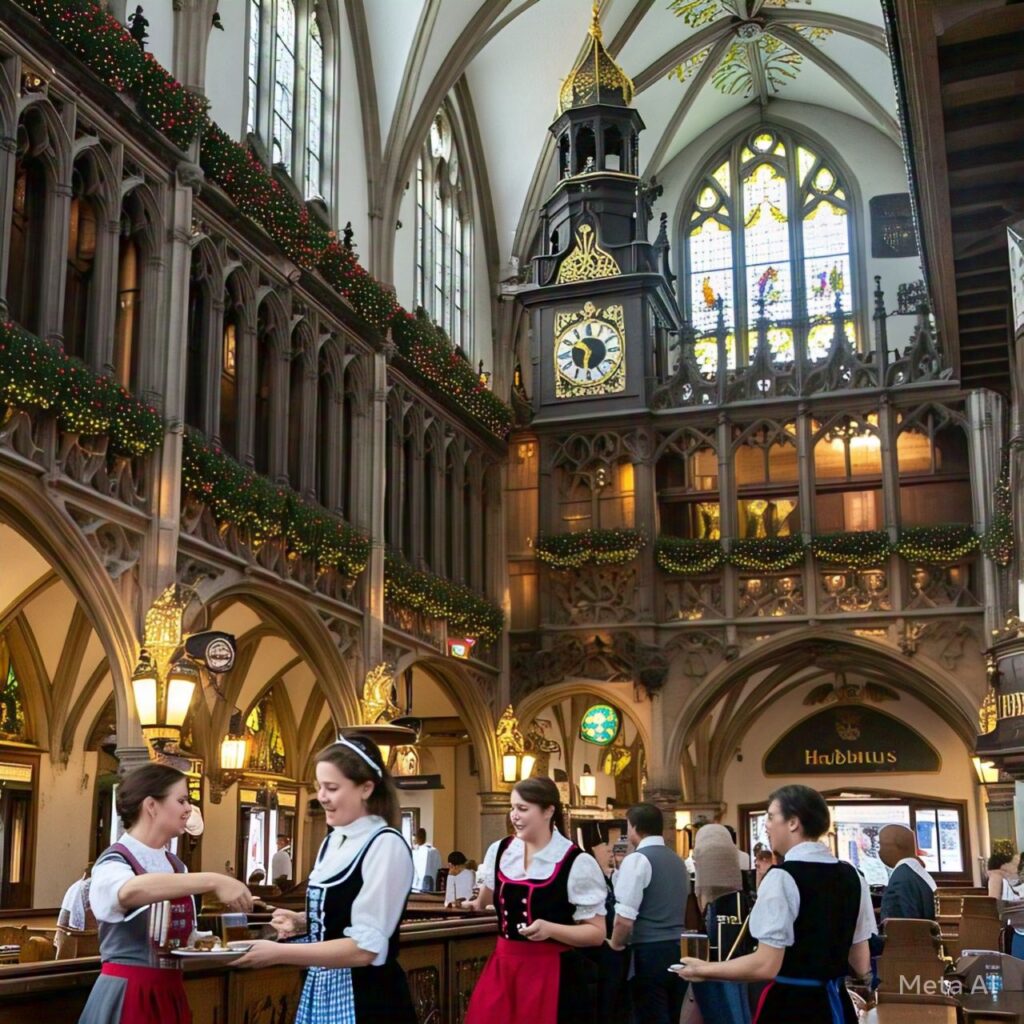
As you may already be aware, I much prefer rosé in the evenings over beer in general. Or whenever it is five o’clock anywhere. It may therefore come as a surprise to learn that the renowned Hofbrauhaus in Munich was one of the things I was most anticipating while I was in Germany.
If I can’t even handle three sips of beer, let alone a huge Bavarian jug, why in the world would I be traveling there? After only two days in the city, that doesn’t seem like a wise use of time.
As it happens, there is a lot more to this place than first meets the eye. In fact, I’ll wager you a huge beer jug that you were unaware of all these Hofbräuhaus facts. Let’s see.
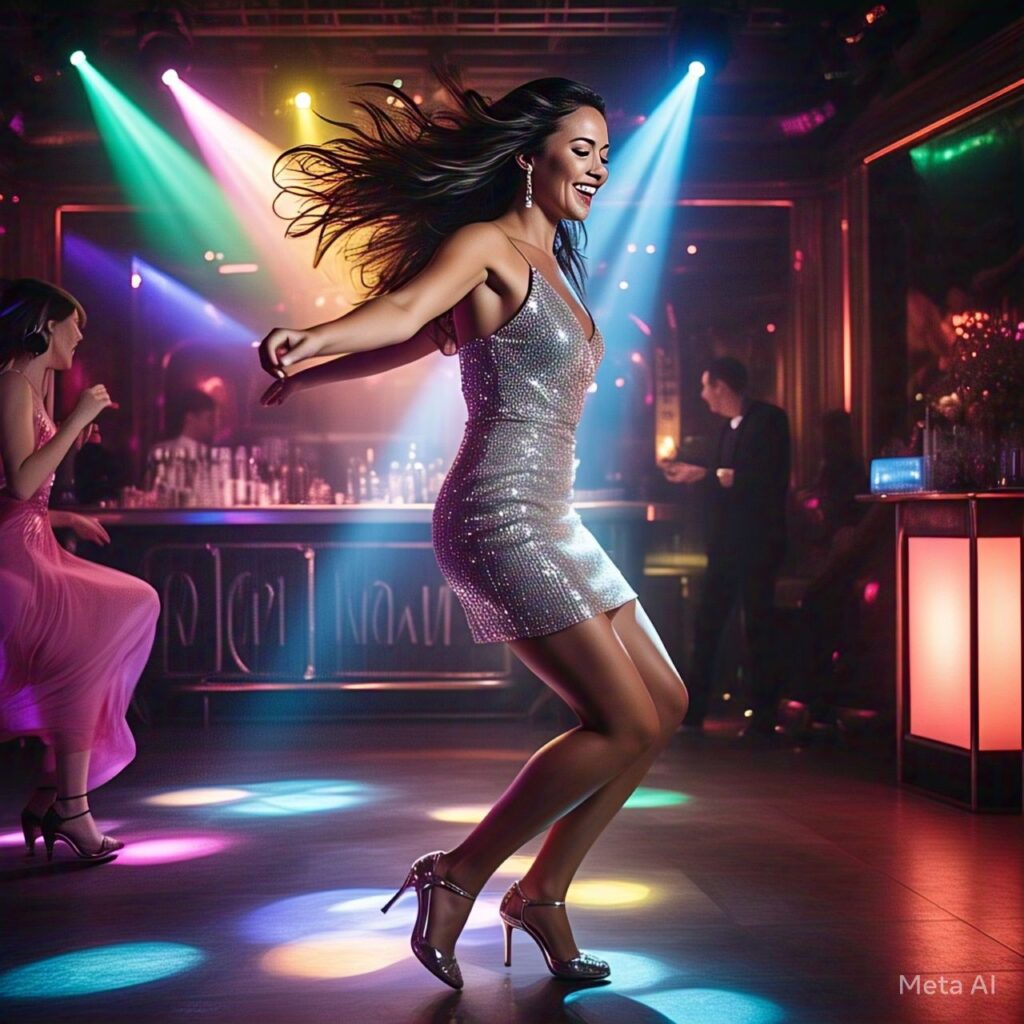
Enjoy a night of dancing!
The oldest brewery in Munich is Hofbräuhaus.
During the 16th century, beer was not extremely popular in Bavaria. Imports gained popularity once people learned about Northern Germany’s excellent brews. But there was a price for them!
Thus, on September 27, 1589, the Duke of Bavaria, William the Fifth, ordered the building of a brewery. His first objective was to reduce the amount of money the state spent on beer imports, and his second was to supply the Royal family and the Ducal Court with beer, which by that time was widely available in Bavaria. At that point, Hofbräuhaus was born. It mostly made stout-type dark beers.
Official innkeepers have been documented since the early nineteenth century.
Unfortunately, World War II bombers over Munich damaged every chamber. For starters, the old beer hall, also referred to as the Schwemme. After considerable post-war repair work, it was reopened to the public in 1958.
Is Munich’s Hofbräuhaus beer the best?

What a gorgeous location
Shortly after its launch, the beer quickly rose to fame throughout Europe. People praised its amazing taste and purity.
In fact, it became so well-known that during the Thirty Years War, King Gustavius of Sweden agreed to forgo an invasion of Munich in return for 600,000 barrels of the good beer.
The Nazi party was established by Hitler at the Hofbräuhaus.
Today, the Hofbräuhaus is tragically and notoriously associated with the Third Reich.
Adolf Hitler gave his first formal address as leader of the National Socialist German Workers’ Party in front of a sizable crowd on February 24, 1920, in the Festival Room on the third floor. The 25 Thesis that would later form the foundation of the Nazi party were included in this address.
Members of the opposing parties, particularly the Communists and Social Democrats, started to quarrel as Adolf Hitler was speaking. As hundreds of Nazis and their political rivals started punching and flinging beer cups at one another, the altercation swiftly turned into a full-on brawl. Despite avoiding chairs and tables, Hitler was able to complete his address.
The Munich Hofbräuhaus also gave rise to the Sturmabteilungen, or SA, a paramilitary Nazi streetfighting unit in November 1921. Its primary goals were to harass Jews, disperse opposition party gatherings, and defend Nazi rallies. They were crucial to Adolf Hitler’s ascent to power in the 1920s and 1930s.
In case you were unaware, Adolf Hitler loved painting. In 1907, the Academy of Fine Arts Vienna turned him down twice. He created a number of watercolor paintings of the Hofbräuhaus façade while he was in power.
The party thereafter regularly held meetings and gatherings in the beer hall starting in the 1920s and continuing during the war. The Hofbräuhaus suffered significant damage from allied airstrikes near the conclusion of World War II because of its strategic significance to the Nazi party.
The Hofbräuhaus has multiple sites.
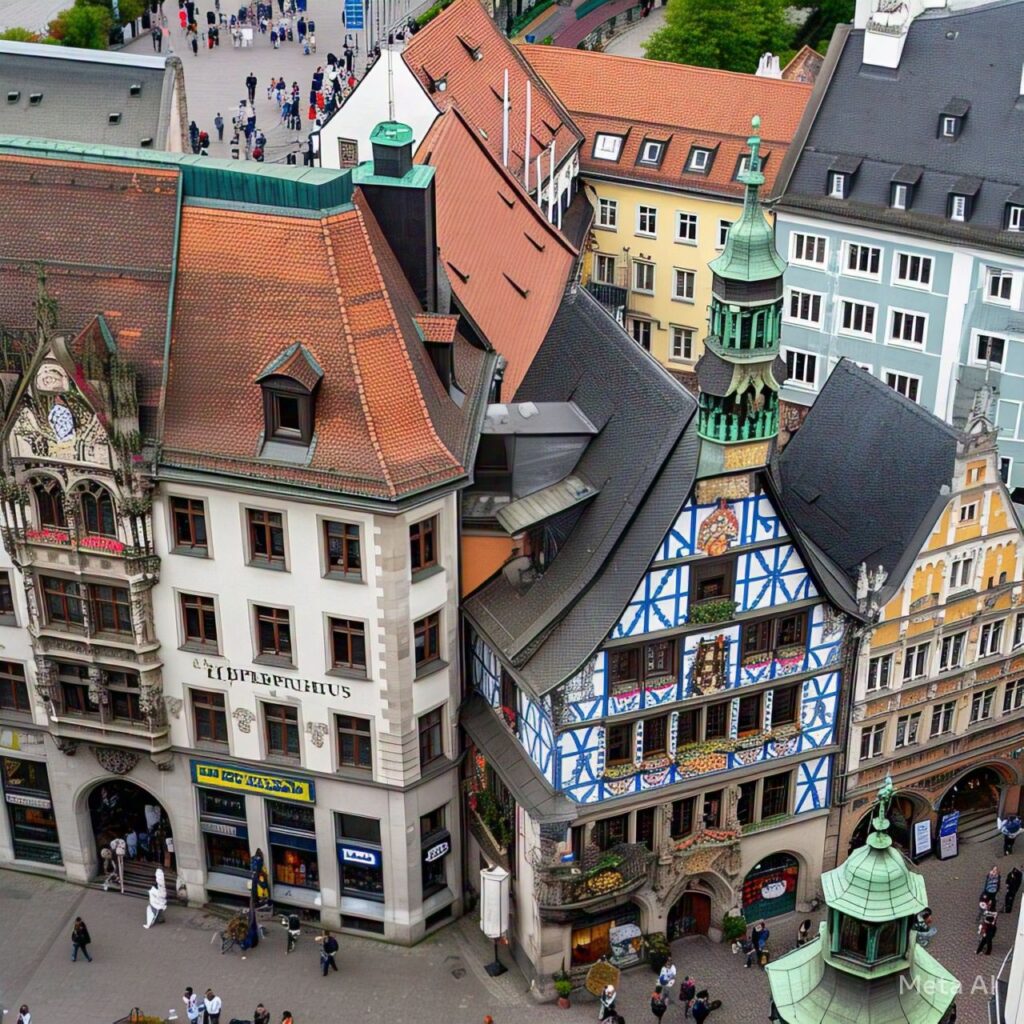
The charming Old Town streets of Munich
The Hofbräuhaus has 24 more locations worldwide, including in Stockholm, Philadelphia, Seoul, Genoa, and Dubai.
According to reports, the Las Vegas location is the first and most successful full-scale duplicate of the beer house.
The Hofbräuhaus was visited by famous persons.
In its heyday, the beer hall was frequented by many well-known figures.
In the late eighteenth century, Wolfgang Amadeus Mozart is reported to have resided nearby the Hofbräuhaus. In a poem, Mozart asserted that he was able to gather enough drunken courage to complete writing his opera Idomeneo only after several trips to the beer hall.
According to reports, Russian revolutionary Vladimir Lenin frequently frequented the Hofbräuhaus in the years preceding World War I. His wife wrote in her journal that “the good beer wipes away all the differences between social classes” at the tavern.
The Hofbräuhaus has hosted a number of well-known guests, such as American presidents John F. Kennedy and George H. W. Bush, jazz musician Louis Armstrong, novelist Thomas Wolfe, painter Marcel Duchamp, and Soviet leader Mikhail Gorbachev.
Hofbräuhaus tokens are used as money by people.
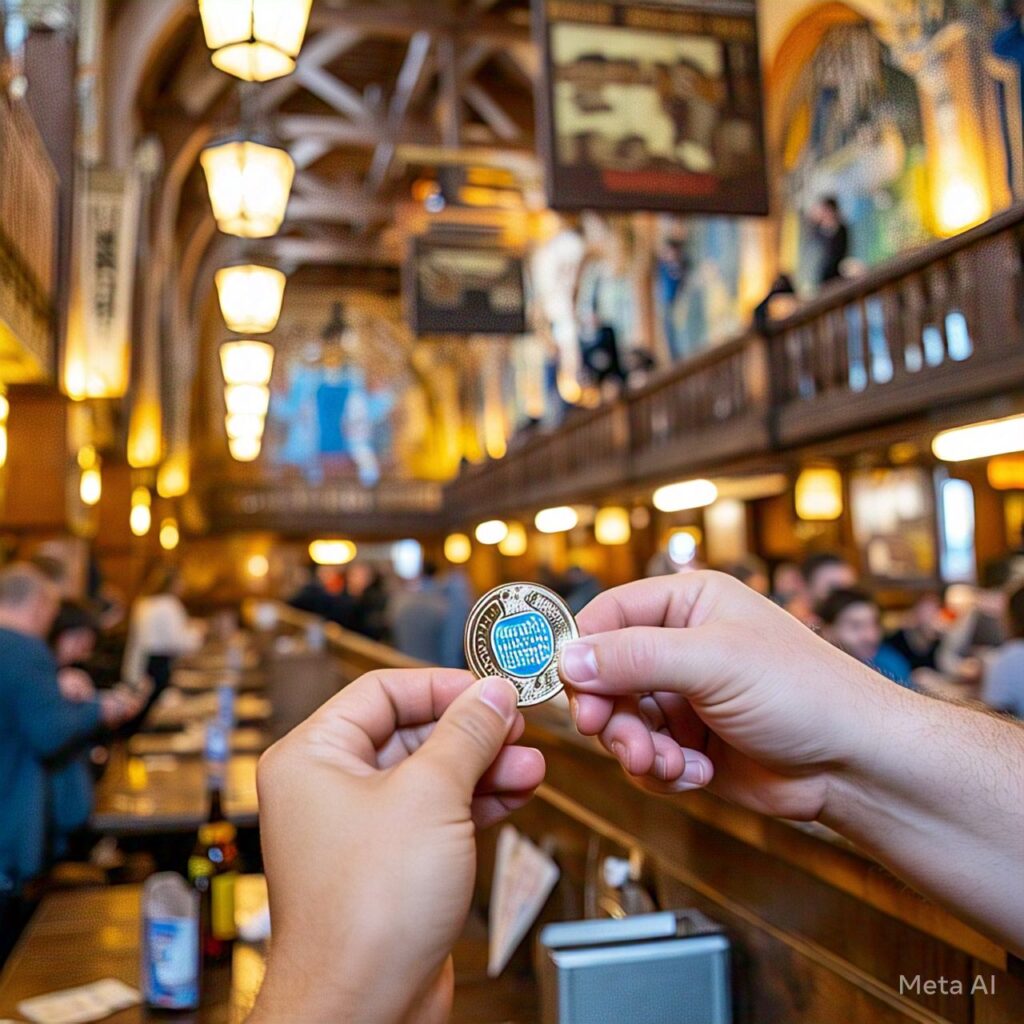
The Hofbrauhaus tokens
A number of local customers have their own money, the Hofbräuhaus beer token, in addition to their own beer steins.
Unlike other currencies, the value of these tokens is fixed and issued by the brewery. They can only be traded in for a Maß, which is a precisely calculated amount of beer (33.8 US fl oz).
Because these beer tokens offer a higher return on investment than bank deposits, locals frequently make jokes about them.
Even if you’re not into beer, Hofbräuhaus is a terrific place to visit.
For those like myself who don’t enjoy beer, it’s also helpful to know that the Hofbräuhaus is incredibly photogenic. Being there is enjoyable even if you don’t drink beer!
The location will be ideal for your camera, from the enormous wooden shelves brimming with jugs to the live music and the traditional Bavarian fare. Indeed, there are a lot of tourists there, and I doubt that any locals were present. Even so, it’s still worthwhile to take a detour, if only to catch a glimpse of this fabled location.
Traditional Bavarian and German fare, including obatzda, bratwurst, and soft pretzels, is also excellent at the Hofbräuhaus.
